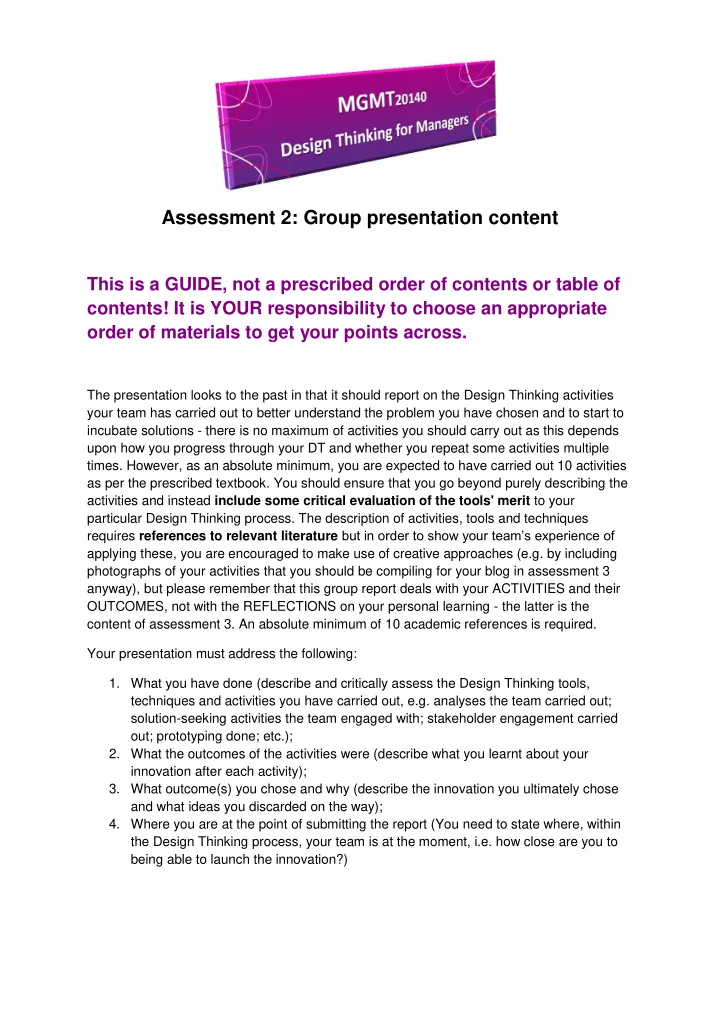

Assessment 2: Group presentation content This is a GUIDE, not a prescribed order of contents or table of contents! It is YOUR responsibility to choose an appropriate order of materials to get your points across. The presentation looks to the past in that it should report on the Design Thinking activities your team has carried out to better understand the problem you have chosen and to start to incubate solutions - there is no maximum of activities you should carry out as this depends upon how you progress through your DT and whether you repeat some activities multiple times. However, as an absolute minimum, you are expected to have carried out 10 activities as per the prescribed textbook. You should ensure that you go beyond purely describing the activities and instead include some critical evaluation of the tools' merit to your particular Design Thinking process. The description of activities, tools and techniques requires references to relevant literature but in order to show your team’s experience of applying these, you are encouraged to make use of creative approaches (e.g. by including photographs of your activities that you should be compiling for your blog in assessment 3 anyway), but please remember that this group report deals with your ACTIVITIES and their OUTCOMES, not with the REFLECTIONS on your personal learning - the latter is the content of assessment 3. An absolute minimum of 10 academic references is required. Your presentation must address the following: 1. What you have done (describe and critically assess the Design Thinking tools, techniques and activities you have carried out, e.g. analyses the team carried out; solution-seeking activities the team engaged with; stakeholder engagement carried out; prototyping done; etc.); 2. What the outcomes of the activities were (describe what you learnt about your innovation after each activity); 3. What outcome(s) you chose and why (describe the innovation you ultimately chose and what ideas you discarded on the way); 4. Where you are at the point of submitting the report (You need to state where, within the Design Thinking process, your team is at the moment, i.e. how close are you to being able to launch the innovation?)
Here is an EXAMPLE (please do NOT copy this – it is just to show you how you can achieve the task); we will discuss this during our assessment preparation in class, so you will see these slides again at some point during the term:
Recommend
More recommend